Email Marketing
What’s the Role of Email in the Customer Experience?
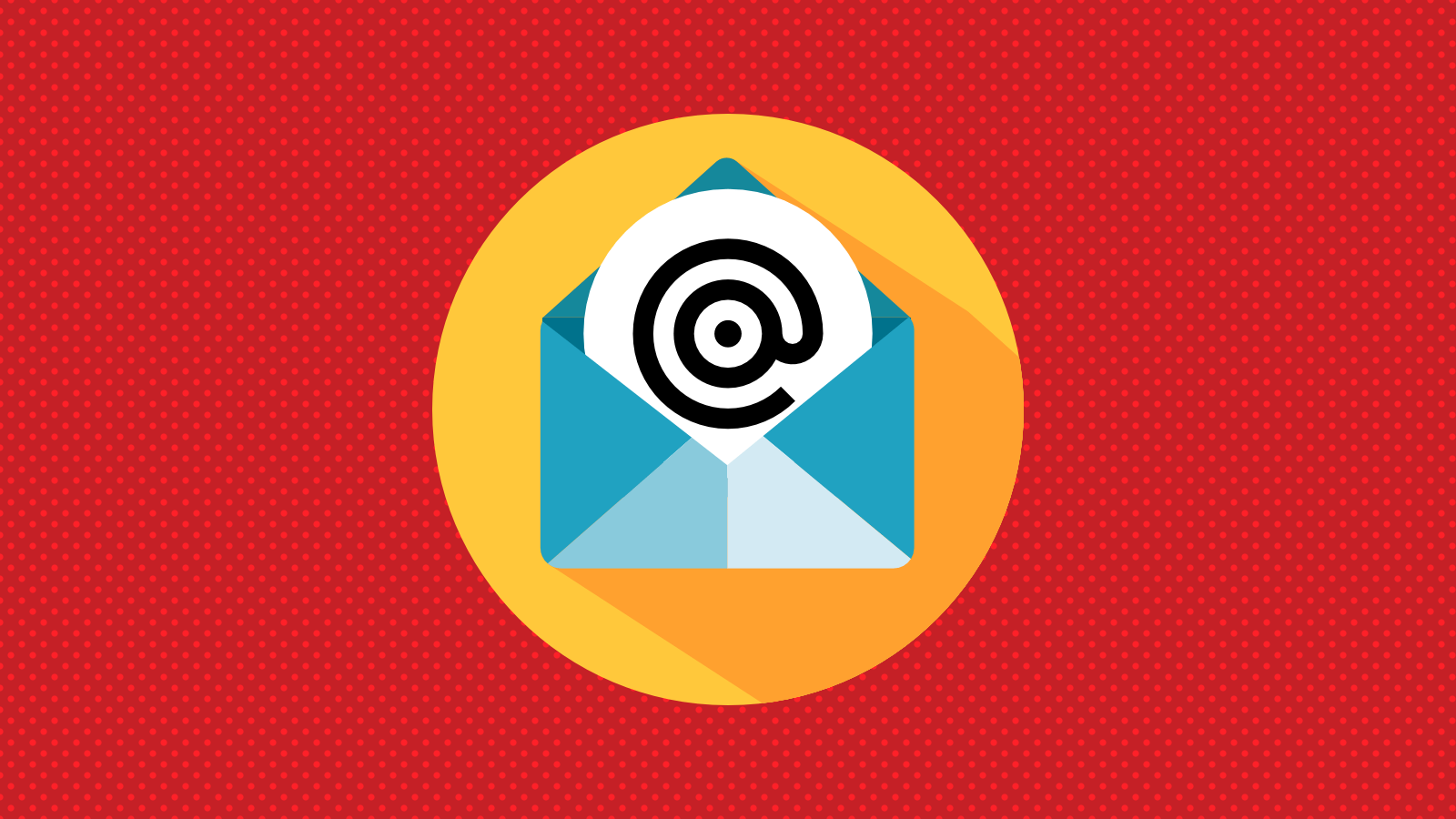
Email Marketing

What kind of experience are you delivering to your customers’ inboxes? Is it engaging, informative, and valuable? Or is it annoying, irrelevant, and easy to ignore?
We’d all like to believe that subscribers are eagerly anticipating our brand’s next newsletter or promotional campaign. Those email performance metrics, however, might be telling you a different story.
Email has the potential to deliver an impressive return on investment (ROI). But to be honest, this cash cow isn’t always the easiest to milk, especially when everyone else is trying to grab an udder too. So, what do consumers really want from email and how can it support a good customer experience?
Our friends at Sinch Mailgun surveyed more than 2,000 consumers from the U.S., UK, France, Germany, and Spain to get some answers. They’ve published the results in a new report, Email and the customer experience 2024. Let’s explore some key findings that reveal email’s importance to consumers and the way they experience a brand.
The customer experience (CX) is anything an organization does to aid or enhance the way people learn about and use your products and services. CX includes every touchpoint or engagement that a brand has with customers and prospects.
Your website is part of the customer experience. The user interface of your application is part of the customer experience. Product packaging and supply chain logistics are part of the customer experience as well. So, when just about everything is connected to CX, what makes email so important?
One word (five syllables) – communication.
Communication is the foundation of a good customer experience. Taking things a step further, you can consider the email channel to be a cornerstone of that foundation. Email is an integral part of every communication strategy. But how do consumers feel about hearing from brands in their email inboxes?
The Sinch Mailgun survey found that email is the channel of choice for most consumers. Results show 75.4% of consumers chose email as a preferred channel from promotional messages and 74% prefer it for transactional messages.
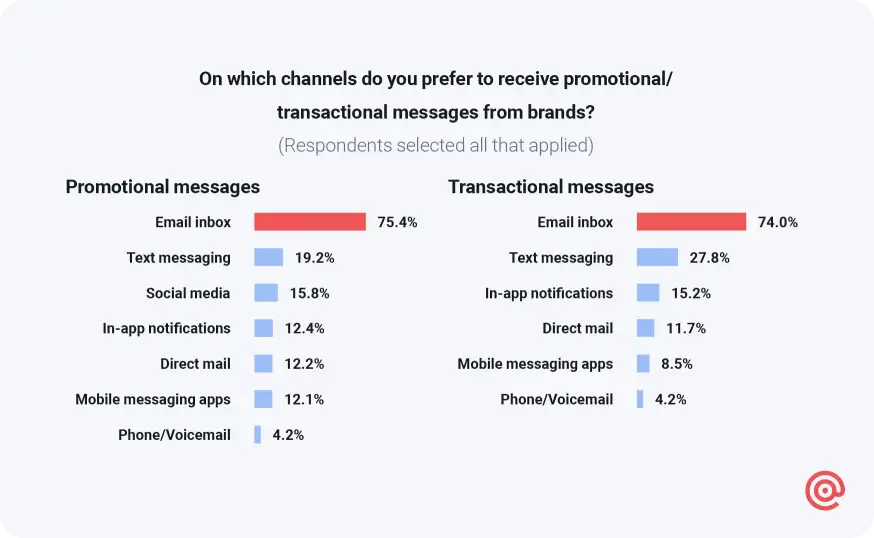
Email has been around since the 1970s. One reason consumers prefer it for brand communications is that they’ve come to expect to hear from brands in their inboxes. But that doesn’t mean senders have the right to batch-and-blast to their heart’s content.
Email’s role in the customer experience is delivering relevant communications.
Here are five reasons why the email channel is used by so many brands and preferred by the majority of consumers. Is your email program taking advantage of these benefits to build a better customer experience?
During the rise of the internet in the 1990s, it became clear that email represented a different kind of direct marketing. Rather than pushing promotional messages on the masses, people who were genuinely interested in hearing from your company could raise their hands and invite you into their inboxes.
Renowned marketer and best-selling author, Seth Godin, noticed this difference. In his 1999 book, Permission Marketing, Godin laid the groundwork for using email as a way to deliver an ideal customer experience in the digital era. It’s one in which people opt in to receive brand communications, and they can choose whether to open and engage with those messages.
Even though consumers may prefer email, there are still right ways and wrong ways of communicating with your customers through this channel. As Godin told Sinch Email on Acid, there’s a very clear line between those who send permission-based communications and those who don’t.
“Either you’re a spammer or you’re not. Either you’re regularly skirting the edges, trading lists, hustling people, writing link bait subject lines, evading policies and skulking around, OR, you’re being clear and open and delivering messages that are anticipated, personal and relevant.”

Delivering a good customer experience is all about respect. You show respect when you receive permission before adding someone to your list. But even then, senders can abuse the permission they’ve earned, and that’s no good for anybody. The struggle of “standing out in the inbox” is one that email marketers created for ourselves. 73% of the consumers in Mailgun’s survey said they get more than 10 emails per day. Yet nearly half will only open a few emails from brands and 8% won’t open any at all.
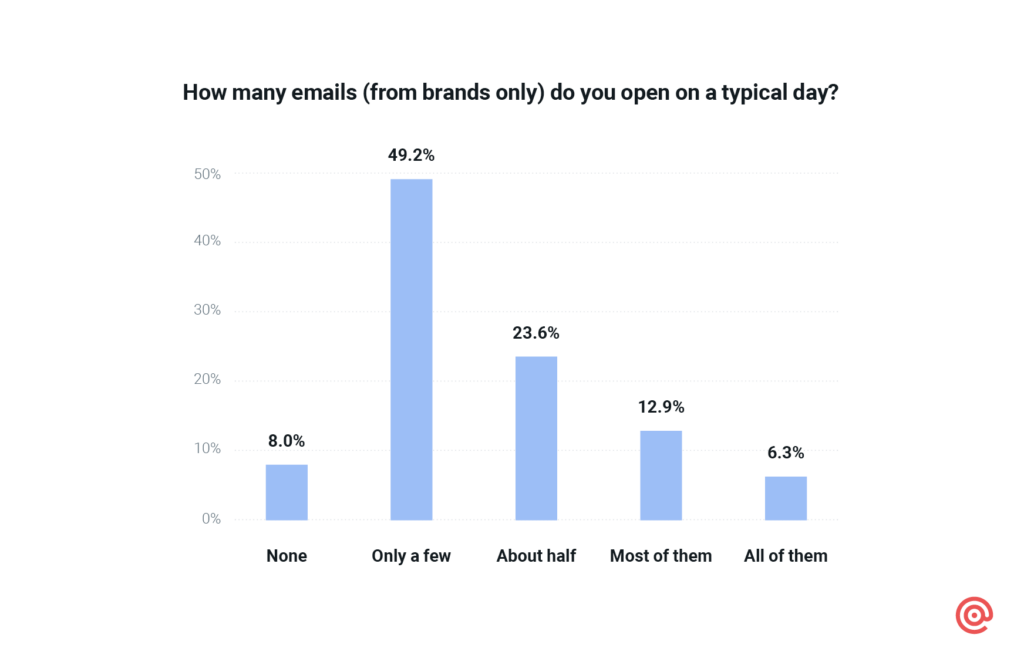
This is the never-ending challenge for email marketers. How do you overcome inbox clutter without adding to it? Seth Godin already told us the best way to do that. Your emails must be anticipated, personal, and relevant.
Consumers want to hear about your brand’s latest deals and discounts. If your email marketing metrics don’t reflect that, you may be sending the wrong messages to the wrong people at the wrong time.
Email and the customer experience 2024 explores the factors that motivate consumers to sign up, open, and click on emails. The two biggest reasons for subscribing to email communications from a brand have to do with receiving promotions.
Nearly one-third of respondents (32.7%) said they sign up to regularly receive special offers from brands. Another 23.6% subscribe to get a one-time discount while 15% sign up to get updates about the products they’re purchasing and using.
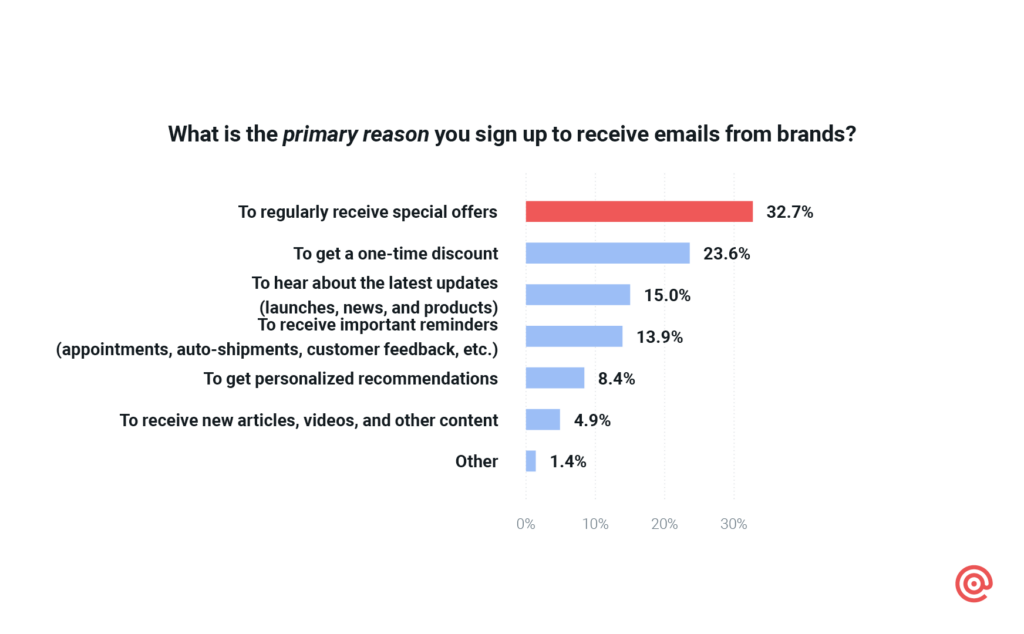
Mailgun’s survey also asked consumers what they value most about emails from brands, and 62.8% said exclusive deals and discounts are the best way to deliver something valuable to their inboxes.
When they are anticipated, personal, and relevant, promotional messages certainly do provide value. That fact is supported by other survey findings, which reveal how consumers interact with their inboxes:
Assuming they gave you permission to email them, we know consumers are anticipating your promotional campaigns. But when every other brand in their inbox is trumpeting a deal, your offers need to break through the noise.
Visit just about any marketing blog around and you’re bound to find articles on the power of personalization. Delivering an email experience that feels personal is an excellent way to improve the customer experience. But an email that feels personal isn’t the same as one that’s simply personalized.
Anyone with some halfway decent martech can stick a first name in an email subject line. It’s so common at this point, consumers are unlikely to see it as something “personal.” An email that is anticipated, personal, and relevant delivers a much deeper customer experience. When customers open your email and it feels as though it was created specifically for them – you’ve won.
The Sinch Mailgun survey asked consumers to rate the factors that convince them to open an email. Seeing their name in the subject line was considered the least important of all options provided. A combined 38.8% said it was either not important or that they didn’t care about subject line personalization at all.
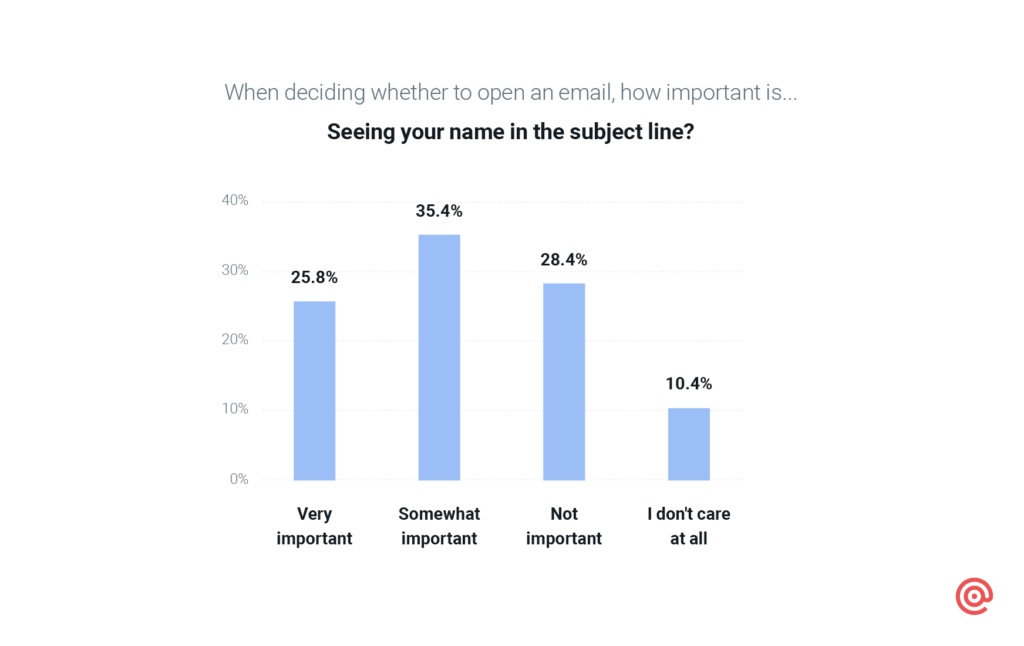
What seems to be more important to consumers is what else is mentioned in the subject line as well as the contents of the email. More than 80% of survey respondents said content that’s personalized to their interests is at least somewhat important when deciding whether to open an email.
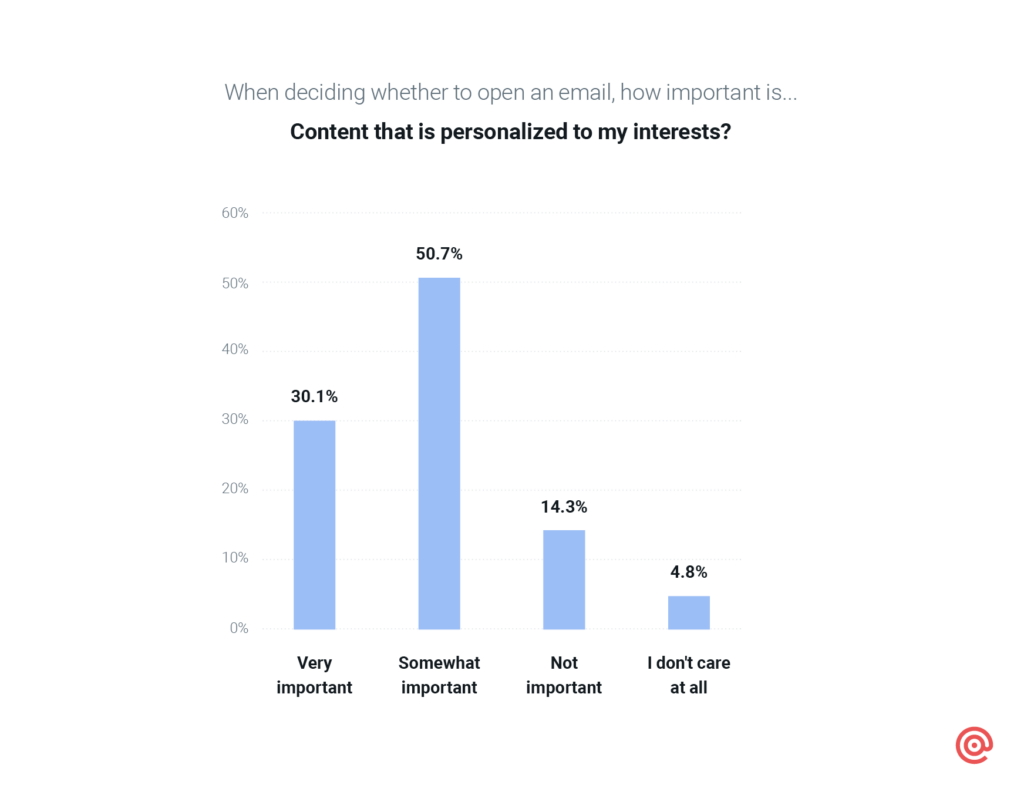
To deliver this kind of customer experience, email marketers can focus on segmentation to make campaigns more relevant to certain consumer groups. Then, you can tailor unique messaging based on demographics like age, gender, or location as well as general interests or where they are in the customer journey. Taking things further, brands can use zero- and first-party data to customize highly-personalized campaigns. That may include personalized product and content recommendations.
Remember, the goal is relevancy. That requires viewing customers as individuals and doing your best to send email campaigns that resonate on a personal level.
Of course, email can do much more than deliver promotions. Businesses use it for all sorts of customer communications. That includes providing customer support and helping people get the most out of their purchases.
Onboarding emails help you connect with new customers to ensure their initial experience meets or exceeds expectations. Sometimes brands spend too much time figuring out how to acquire new customers and they drop the ball after the purchase. A welcome email series is a smart way to make sure the customer experience starts off on the right foot.
If using your product or service comes with a learning curve, email is the perfect channel for delivering educational content like how-to articles. If you sell something that requires specific care or maintenance, then you can deliver tips to customers’ inboxes. Do you offer software with awesome features that get overlooked? Email can shine a spotlight on those features, communicate the benefits, and keep users engaged.
People on your list may not always be ready to buy, but relevant email communications help you establish trust and keep your brand top of mind. So the next time a customer journey begins, they’ll know exactly where to turn. How is your brand using email to improve the customer experience in between purchases?
When it comes to being anticipated, personal, and relevant, transactional emails check all three boxes:
Messages such as automated order confirmations, shipping updates, password resets, security notifications, and appointment reminders are vital to the customer experience. Don’t take them for granted.
Around 23% of the consumers Sinch Mailgun surveyed said transactional information is what they value most about email communications from brands. Other survey questions, however, reveal the true importance of transactional messages.
For example, if a transactional email failed to show up as expected, 71% of consumers would look for it in their spam folder. Another 16% would check spam if they considered the message to be important.
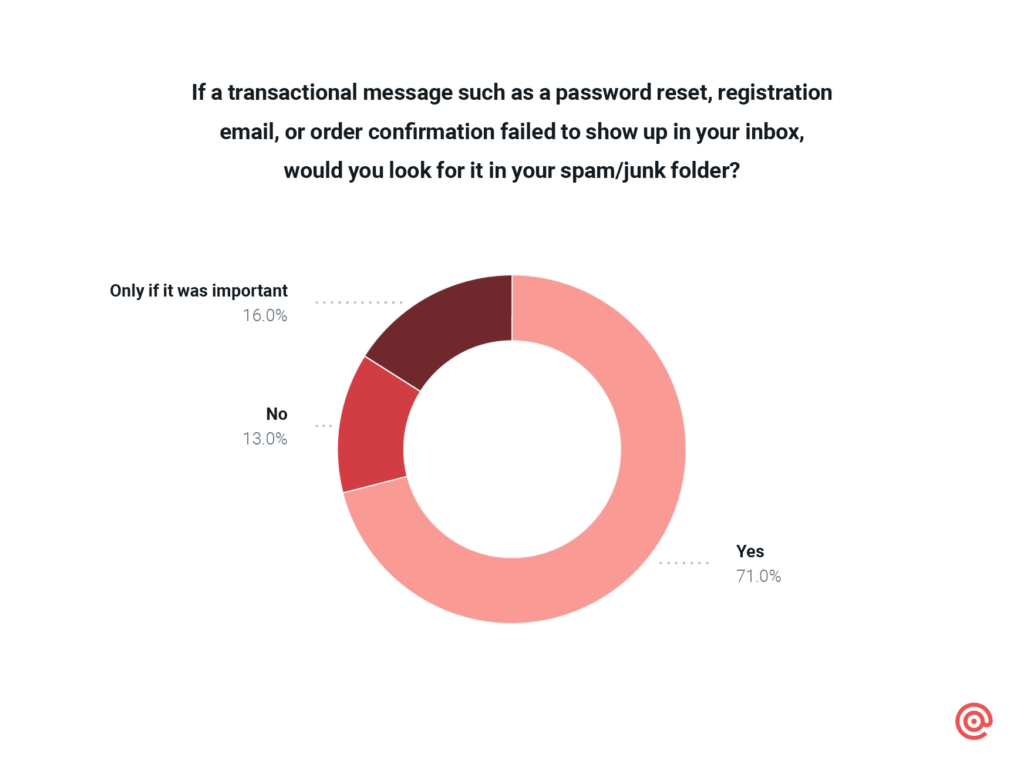
This finding does not suggest you don’t need to worry about email deliverability. It shows that consumers are willing to take extra steps to find transactional messages.
There are also certain times of the year when transactional messages from brands are extra important. During the holiday shopping season, for instance, keeping track of purchases and shipments is crucial. Transactional emails help consumers stay organized, informed, and connected with retail brands.
The survey found more than 80% of consumers think transactional messages are important during the holidays. 42% called it “very important.”
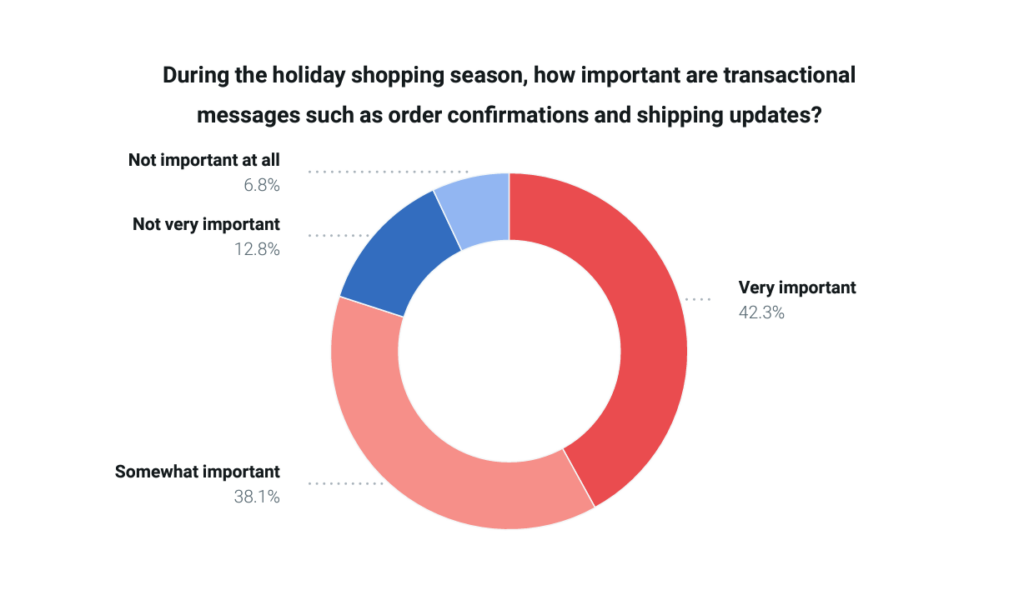
There’s a lot more to uncover about email and the customer experience. Sinch Mailgun’s full report dives deeper into the daily habits of consumers and their inboxes, including what convinces them to click through to your website.
You’ll also gain a better understanding of how deliverability impacts the customer experience and how implementing channels beyond email strengthens your communications strategy.
Visit Sinch Mailgun and download your copy of Email and the customer experience 2024 right now. Find out how to deliver what consumers really want.